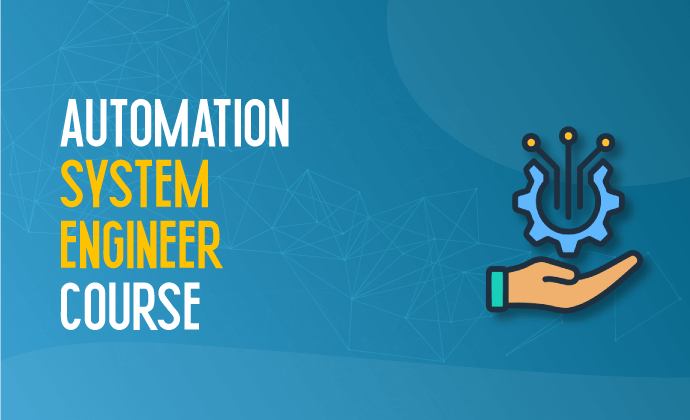
Course Details
Are you ready to become a master in designing and implementing automation systems that redefine industries? Your journey starts here with IIPD Global's Industrial Automation System Engineer (ASE) course in Lahore, Pakistan.
In today's rapidly evolving landscape, industrial automation stands as a cornerstone across diverse sectors. From manufacturing plants to healthcare facilities, automation systems are driving efficiency and innovation. The demand for skilled professionals capable of developing, implementing, and maintaining these systems is skyrocketing.
Our ASE course is meticulously crafted to arm participants with comprehensive knowledge and practical skills essential for navigating the complexities of industrial automation. Whether you're a recent graduate, seasoned engineer, or aspiring professional seeking career advancement, this course is your gateway to success in the dynamic field of industrial automation.
Key Highlights of the Course:
- Comprehensive Curriculum: Dive deep into automation technologies, mastering the design, development, programming, and troubleshooting of automation systems.
- Hands-On Experience: Gain practical proficiency in a range of automation systems, including PLCs (Siemens, Allen Bradley, and more), Control Logic PAC, HMI (Siemens), SCADA (Intouch), VFD (Danfoss and Siemens), IIoT Basics with HMS Gateway, Electrical Control Panel, and Industrial Networking.
- Expert Guidance: Learn from industry experts with years of experience in the field, ensuring you receive top-notch training aligned with industry standards.
- Career Advancement: Equip yourself with the expertise sought after by leading companies worldwide, opening doors to lucrative career opportunities and advancement.
Embark on your journey to becoming an automation systems expert with IIPD Global's ASE course in Lahore. Join us and unlock the skills needed to thrive in today's automation-driven world.
Course Outcome:
Upon completing the Automation System Expert Course from IIPD, the candidate will be able to:
- Locate and identify hardware systems like PLC, HMI, VFD, PAC
- Program and configure different brands of PLCs and PACs per the process/site requirement.
- Interpret, understand, and apply ladder logic programming as per requirements and make changes to running programs
- Program and configure HMI and SCADA and communicate with PLCs.
- Program and set VFDs for industrial applications
- Perform industrial networking using communication protocols like MODBUS 485, MODBUS TCP, PROFIBUS, and PROFINET between PLC and slave modules.
- Troubleshoot Communication issues.
- Troubleshoot I/O Faults
- Going online with the software for monitoring and troubleshooting
- Understand and perform PLC-based Panel wiring.
- Understand the Industrial Internet of Things (IIoT) technology, fetch data from PLC, and upload it to the cloud-based system.
Prerequisite:
- Bachelor/Diploma In electrical/ electronics/ mechanical/ mechatronics/ instrumentation/ control/ robotics and minimum 2 years experience in a relevant technical field.
- Understanding of the systems to which the training is related.
Course Outline
Become an Automation System Expert (ASE) with our comprehensive course in Dubai, UAE. Gain hands-on experience in designing and implementing automation systems.
Introduction
- History of PLC
- Different Control Methods
- Relay, its application, and its features.
- Electrical wiring diagram of Gates using NO and NC Switches
- Implementation of Relay Gates
- Introduction to PLC and applications
- Advantage of PLC over relay wiring
- PLC Programming Languages
- General Introduction on SCADA, DCS
Allen Bradley PLC
- MicroLogix 1400 PLC Anatomy, Software Packages, and Versions
- Controller Properties, RSLogix500 First Look
- Input, Output Addressing, Memory allocation
- Configuring BOOTP DHCP tool for Communication
- Setting up RSLinx Classic Drivers, using RSEmulate for Program Simulation
- Controller and Program Tags
- Practice Questions and testing the program
- Creating interlocks for motor control
- Concepts of Timers-TON, TOF, RTO
- Concepts of Counters-CTU, CTD
- RTO RES
- Latch, Unlatch, OSR
- Uploading and Downloading the program to the controller
- Online editing
- Advanced Math and Data conversion function
- Using Compare, Move, and limit functions
- Remaining instructions
- Configuring Analog IO
S7 1200 -SIEMENS PLC
- Siemens S7 series PLC Anatomy and Models
- Software Packages and Versions
- TIA Portal First Look
- Controller Properties
- Configuring Communication
- Selection of Controllers
- Input, output Addressing, and memory mapping
- Uploading and Downloading the program to the controller
- Creating new Projects/Programs and Tagname based Programming
- Basic Instructions
- Online editing
- Practice Questions
- Concepts of Timers - TON, TOF, TP, TONR
- Concepts of Counters - CTU, CTD, CTUD
- Using Compare, Move, and limit functions
- RTC
- Remaining instructions
- Configuring Analog IO
SCADA -InTouch (Schneider Electric)
- Introduction and Application of SCADA
- Creating new project
- Basic drawing tools and color-changing features
- Wizards
- Single switch and light with the same tag
- Linking different tags using scripts
- On the show, while the show
- Automatic decrementing
- Animation properties – fill, location, orientation, size etc
- Condition scripts
- Data change scripts
- Trends(real-time and historical)
- Key scripts
- Quick function
- Practice questions
- Remaining Features
- PLC - SCADA Interfacing
- Binary Output Interfacing
- Why Inputs cannot be controlled from SCADA.
- PLC Program and Interfacing
Delta/Mitsubishi/Schneider PLC -Any One brand
- Intro, Addressing, Memory allocation
- Basic Instructions
- Using Timer and Counter instructions
- Using Compare, Math, Move instructions
- Shift Instructions
- Remaining instructions
- Configuring Analog IO
Programmable Automation Controller (PAC) -Allen Bradley
- ControlLogix Controller Anatomy
- RSLogix 5000 vs Studio 5000
- Addressing and memory allocation
- Bit logic Instructions
- Timer And Counter Instructions
- Compare instructions, Including CMP
- Mathematical instructions, Including CPT
- Using of arrays
- Using Compare, Move, and limit functions
- User User-defined types
- Industrial Application Practice Questions
Siemens HMI
- Select the HMI model
- Creating a new project
- Working with the TIA portal for PLC tag communication
- Interfacing and communication settings
- PROFINET Network configuration
- Creating New Screens
- Screen Navigation
- Addressing and configuring Digital & Analog Tags
- Configuring Lamps, Switches & IO Field Elements
- Trends and Graphs
- User Security configuration
- Alarm Configuration
- Using other graphical elements
VFD (Danfoss)
- What is Local,2 wire and 3 wire Control why and where it is used
- (explanation)
- Basic programming parameters and Local Control
- 2 wire control
- Analog Input Control
- Program Parameters
- Preset frequency using digital input
- Relay operation
- Display Parameters, Terminal Parameters
- 3 wire control
- Jogging using digital input
- All advanced Parameters (Eg:- Skip frequency, Start at power up)
- Other digital input parameters
- Automatic stopping of the motor when the frequency exceeds a predefined limit
- Practice Questions
Sinamics VFD G120C (Siemens)
- Basic programming parameters and local control
- 2 wire control
- Preset frequency using digital input
- Display Parameters
- 3 wire control
- Jogging using digital input
- Remote speed control using analog input
- Relay operation
Electrical Control Panel Wiring
- How a relay can replace PLC in small applications
- Switching of single output using relay
- AND, OR, NAND NOR gates
- XOR gate using double pole and then using single pole relay
- DOL starter
- Interlocking of two outputs using relay(DOL)
- Contactors: working and applications
- DOL starter using a contactor
- Timer 2 modes of operation On delay, Interval Delay
- Star delta starter wiring of 3-phase motor
- Alarm System problem using a relay with 3 poles and then reduced to 2 pole
- PLC Wiring
Industrial Communication Networks
- PROFIBUS
- PROFINET
- MODBUS 485
- MODBUS TCP
Industrial Internet of Things (IIoT)-Basics
- Introduction to IIoT
- Acquiring Data from PLC
- Sending Data to Cloud
- Field Instrumentation and Introduction to DCS (Theory)
Methodology: Batchwise and One on One Hands-on-Session
Conclusion:
In summary, embarking on the Industrial Automation System Engineer (ASE) course at IIPD Global in Lahore is your key to unlocking a world of opportunities in the realm of automation. With a hands-on learning approach, expert guidance, and a focus on real-world applications, this course equips you with the skills and knowledge needed to thrive in today's automation-driven industries.
Whether you're a recent graduate, a seasoned professional, or an aspiring engineer, our ASE course provides a pathway to career advancement and success. Join us and take the first step towards becoming a sought-after automation systems expert, ready to make a meaningful impact in the world of industrial automation.
Course Curriculum

Jason Thorne
DeveloperI am a web developer with a vast array of knowledge in many different front end and back end languages, responsive frameworks, databases, and best code practices









